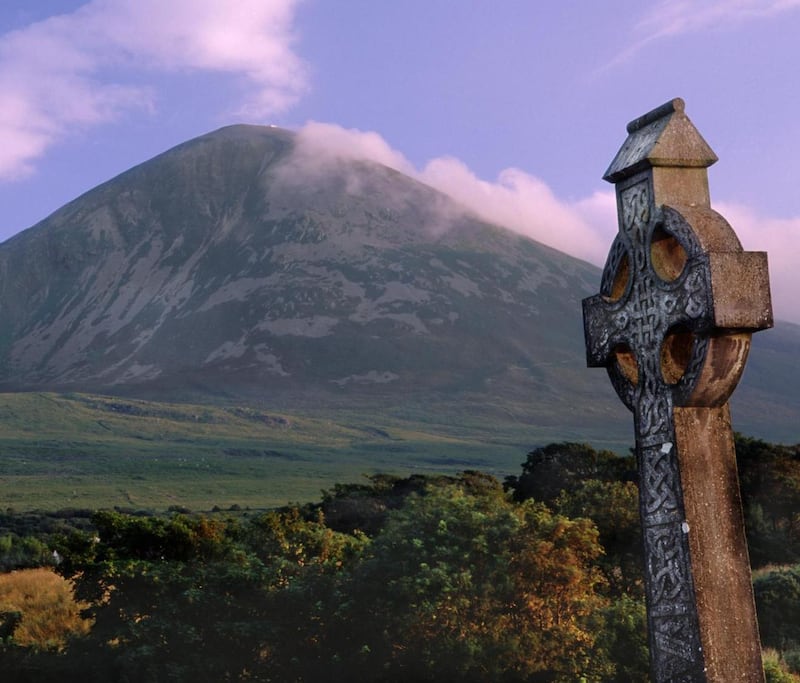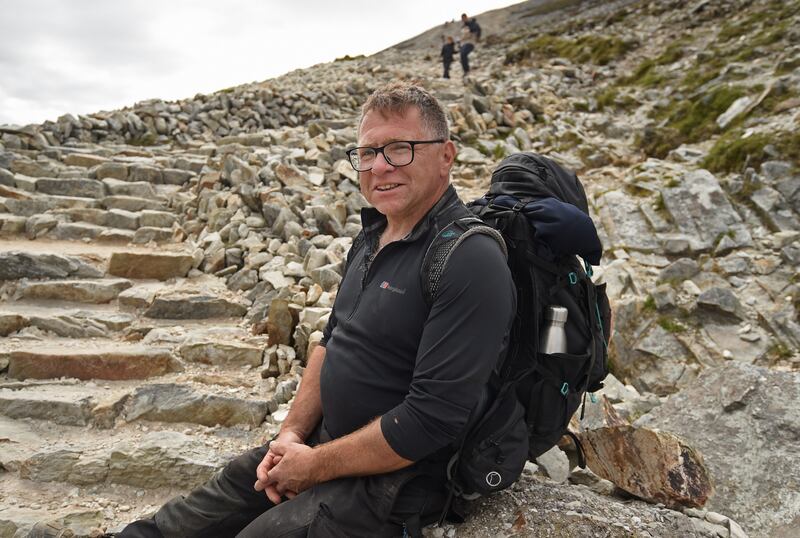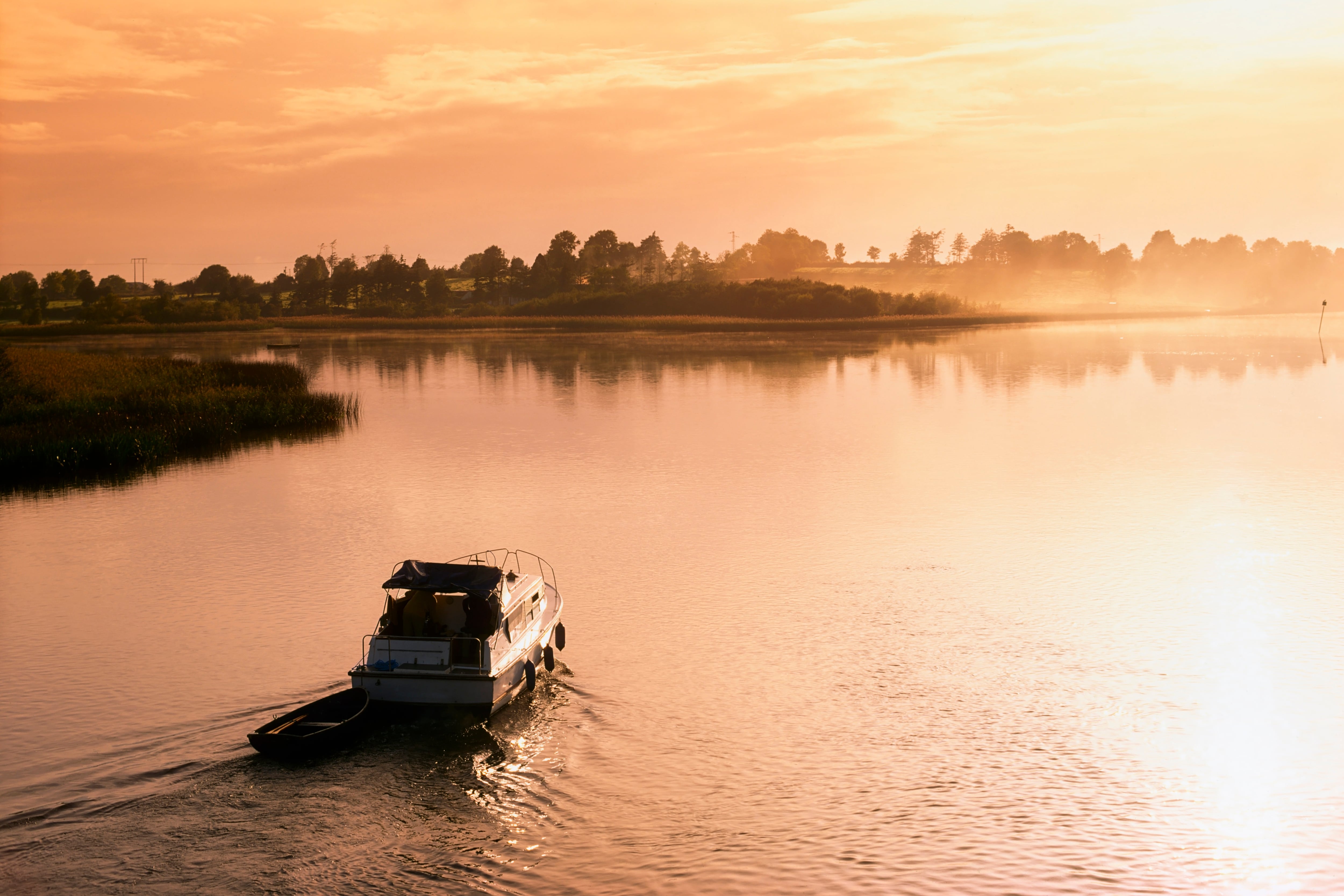A few years ago on a Monday morning in August, I travelled to the car park at the base of Croagh Patrick in Murrisk, Co Mayo. It was a little after 6am and, coffee in hand, I looked toward Patrick’s pyramidal peak, barely visible through a swirl of smoky clouds. Nearer to the base the view was clear; the smooth white statue of St Patrick contrasted with the tinge of green and yellow from the 475 million-year-old serpentinite rocks exposed along the start of the pilgrim path.
Some months before I had climbed the mountain with my young kids. But because so many people were streaming along the main route – it was so packed it felt like a queue to the top – we decided instead to go up the bracken-laden back of the mountain. It made for an exhilarating 765m climb, with all the scintillating views of Clew Bay and Clare Island, without a person in sight.
The mountain has long suffered from being one of Mayo’s most valuable natural resources. It’s a place of extraordinary beauty and religious significance, with a rich seam of high-grade gold in its quartzite-filled contours. In the late 1980s, locals united to fight off the advances of two Irish-based mining companies that had eyed the mountain for prospecting. During a visit to Mayo to show his support, British environmental campaigner and presenter David Bellamy urged the people of Ireland to realise what a ‘beautifully wonderful resource it is and that tourism is their future”.
The damage was so extensive in parts that water flowed along the gullies, further eroding the rock
What Bellamy wished for nearly turned into a nightmare. Croagh Patrick quickly became a tourism gold mine, but within a few decades it was crumbling away, worn down by overuse, particularly from sponsored and charity challenge events, which attracted thousands of people to train up and down the main route. In refusing gold mining in 1990, the Irish State had decided that the potential impacts were intolerable, but the limitless tourism in the years after was slowly killing the mountain.
READ MORE
The decision in 2015 by local stakeholders to come together to protect it from further ecological and environmental damage was a crucial step. It culminated in the Department of Rural and Community Development, together with Mayo County Council, agreeing to commit €600,000 of public money to fund a team of five people over three years to repair and rebuild the path, using traditional hand techniques and stone sourced from the mountain itself.

And so, that August morning, I met the team led by Scotsman Matt McConway. As we walked up the first section, it was easy to see how critical the problem had become. The path, which originally would have been 2m to 3m in width, had suffered so much erosion that sections of it had expanded to 50m wide, forming a massive winding scar. The damage was so extensive in parts that water flowed along the gullies, further eroding the rock, and the displacement of scree from the steep rocky peak into streams was causing problems with the local water supply.
Wicklow’s Sugarloaf urgently needs help; other peaks, such as Donegal’s An Earagail, have suffered the consequences of sudden storms and now need repair
The stakeholder group, led by Martin Keating from Mayo County Council, was fortunate to secure the services of McConway, one of Europe’s most skilled upland path builders with more than three decades of experience. Not only did he lead the work, but he also trained the other team members, Bernard Burke, Frank McNamara, David Doyle and Tulio de Jesus, all of whom honed skills in high demand.
[ Killing rhododendrons is not pretty work but is necessary to restore natureOpens in new window ]
Mountains across Ireland show signs of severe degradation from increased footfall – particularly since the pandemic – along with the impact of extreme weather events from climate change. Wicklow’s Sugarloaf urgently needs help; other peaks, such as Donegal’s An Earagail, have suffered the consequences of sudden storms and now need repair. We need dozens of skilled operators like McConway, and there now may be a good case for establishing a mountain and habitat restoration training centre where apprentices can gain the competencies and qualifications to work on similar upland projects.
It’s not easy work. The Croagh Patrick path team’s working day began with a long climb each weekday morning. When I joined them on the mountain, they showed me their techniques to divert water from further damaging the path. They put in anchor bars to stop material from migrating down the slope and used gravity and friction to interlock the stones. They’d place large rocks on the path to block walkers from using alternative routes outside the repaired route. The pathway was fixed and narrowed, giving habitat back to the mountain.
The team has created a work of art that culminates in an exquisite handmade path at the top of the cone, which brings the walkers to the mountain’s peak.

Next Sunday, the last in July, 30,000 people are expected to ascend Croagh Patrick during its annual day of pilgrimage. If you happen to be one of them, you might raise your water bottle at the summit to the hardworking team of five who did so much to help restore this mountain and set it on a more sustainable path for the future.
The Croagh Patrick Path Project is looking for volunteers to help protect the mountain. See croaghpatrick.net













